News
EPJ H Highlight - Einstein’s conversion from a static to an expanding universe
- Details
- Published on 05 February 2014

Albert Einstein accepted the modern cosmological view that the universe is expanding, only long after several of his contemporaries had demonstrated it with astrophysical observations
Until 1931, physicist Albert Einstein believed that the universe was static. An urban legend attributes this change of perspective to when American astronomer Edwin Hubble showed Einstein his observations of redshift in the light emitted by far away nebulae—today known as galaxies. But the reality is more complex. The change in Einstein’s viewpoint, in fact, resulted from a tortuous thought process. Now, in an article published in EPJ H, Harry Nussbaumer from the Institute of Astronomy at ETH Zurich, Switzerland, explains how Einstein changed his mind following many encounters with some of the most influential astrophysicists of his generation.
EPJ A Highlight - MINOS: A vertex tracker coupled to a thick liquid-hydrogen target for in-beam spectroscopy of exotic nuclei
- Details
- Published on 05 February 2014

MINOS is a new apparatus dedicated to in-beam nuclear structure experiments with low-intensity exotic beams at energies above 150 MeV/nucleon.
It is intended to provide increased luminosity compared to standard solid-target experiments in hydrogen-induced studies, while simultaneously improving experimental resolution. This article exposes the concept of the device developed at the CEA in France and reviews in detail the associated recent technical advances. MINOS is composed of a thick finger-shaped liquid hydrogen target, from 50 to 200 mm thick, combined with a compact time projection chamber serving as a vertex tracker, the first of its kind in low-energy nuclear physics. This innovative setup offers access to the first spectroscopy of a new range of very exotic nuclei beyond our current reach. An exciting program on the search for new 21+ states in neutron-rich even-even nuclei, spectroscopy of unbound oxygen nuclei and di-neutron correlations in borromean nuclei will be performed with MINOS at the RIKEN Radioactive Isotope Beam Factory in Japan over the next few years. MINOS is funded by the European Research Council.
EPJ B Highlight - Bottom-up insight into crowd dynamics
- Details
- Published on 04 February 2014
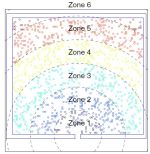
A new study proposes a method for quantitatively analysing the relative value of models for crowd dynamics prediction, following individual movement
Stampedes unfortunately occur on too regular a basis. Previously, physicists developed numerous models of crowd evacuation dynamics. Their analyses focused on disasters such as the yearly Muslim Hajj or of the Love Parade disaster in Germany in 2010. Unfortunately, the casualties at these events may have been linked to the limitations of the crowd dynamics models used at the time. Now, a new study outlines a procedure for quantitatively comparing different crowd models, which also helps to compare these models with real-world data. In a paper published in EPJ B, Vaisagh Viswanathan, a PhD student from Nanyang Technological University in Singapore, and colleagues have demonstrated that these crowd evacuation dynamics models are a viable decision-making tool in safety preparation and planning concerning real-world human crowds.
EPJ Quantum Technology – A new Open-Access Journal is launched
- Details
- Published on 31 January 2014

The publishers are pleased to announce the launch of a new open-access journal in the EPJ series – EPJ Quantum Technology. The journal has just gone live, with three research papers already available.
Driven by advances in technology and experimental capability, the last decade has seen the emergence of quantum technology: a new praxis for controlling the quantum world. It is now possible to engineer complex, multi-component systems that merge the once distinct fields of quantum optics and condensed matter physics.
EPJ E Highlight - Towards tailor-made adhesives
- Details
- Published on 24 January 2014
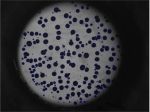
The inner structure of soft adhesive materials during the debonding process is, for the first time, under scrutiny in the hope of producing new, improved adhesives in the future
Tape, self-adhesive labels, Post-it notes and masking tape all contain soft adhesives. This makes them easy to remove—a process referred to as debonding. French scientists have studied how soft adhesives work in the hope of facilitating the design of more efficient adhesives. Francois Tanguy, a researcher at ESPCI ParisTech, the School of Industrial Physics and Chemistry, in Paris, France, and colleagues have, for the first time, performed a precise analysis of the material deformation and structure during the course of debonding for several model adhesives. Their findings are published in EPJ E. By better understanding the connection between the energy dissipated by the polymeric material with adhesive qualities and its response to traction, they hope to improve models of adhesive performance.
EPJ B Colloquium - Thermodynamics and kinetics properties of condensed matter derived through the properties of an intrinsic defect
- Details
- Published on 24 January 2014
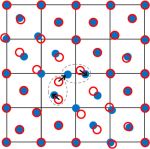
The theory of interstitialcy for simple condensed matters is a theory formulated by Andrew V. Granato enable the determination of the thermodynamic and kinetic properties of simple liquids and glasses. In a new Colloquium in EPJ B the author provides a simpler, more physical and compelling version of his interstitialcy theory. In addition, the results of computer simulations, together with direct and indirect experimental evidence, are updated and reviewed. In addition, the results of computer simulations, together with direct and indirect experimental evidence, are updated and reviewed. The connection between theory and experiment for some of the more notable properties of simple condensed matter is discussed. The direct visual observation of interstitial diffusion to the surface of irradiated platinum thin films near 20K by Morgenstern, Michely and Comsa provides compelling evidence for the interstitialcy theory presented herein.
EPJ B Highlight - Quasi-particle swap between graphene layers
- Details
- Published on 21 January 2014
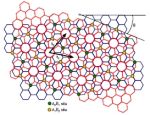
Equations used to describe parallel worlds in particle physics can help study the behaviour of particles in parallel graphene layers
Belgian scientists have used a particle physics theory to describe the behaviour of particle-like entities, referred to as excitons, in two layers of graphene, a one-carbon-atom-thick honeycomb crystal. In a paper recently published in EPJ B, Michael Sarrazin from the University of Namur, and Fabrice Petit from the Belgian Ceramic Research Centre in Mons, studied the behaviour of excitons in a bilayer of graphene through an analogy with excitons evolving in two abstract parallel worlds, described with equations typically used in high-energy particle physics.
EPJ C goes Open Access funded by SCOAP3
- Details
- Published on 01 January 2014
As of January 2014, The European Physical Journal C – Particles and Fields will be published as full open access journal funded by SCOAP3. One of the leading journals in the field, EPJ C was selected to participate in this initiative - lead by CERN with the support of partners in 24 countries - which will make a vast fraction of scientific articles in the field of High-Energy Physics open access at no cost for any author. Moreover authors will retain copyright and creative commons licenses will enable wide re-use of the published material.
EPJ E Highlight - Elucidating biological cells’ transport mechanisms
- Details
- Published on 18 December 2013
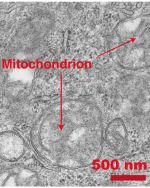
A new study focuses on the motion of motor proteins in living cells, applying a physicist’s tool called non-equilibrium statistical mechanics
Motion fascinates physicists. It becomes even more intriguing when observed in vivo in biological cells. Using an ingenious setup, Japanese scientists have now calculated the force of molecular motors acting on inner components of biological cells, known as organelles. In this study, the focus is on mitochondria—akin to micrometric range cellular power plants—travelling along microtubules in a cell. Published in EPJ E by Kumiko Hayashi, from Tohoku University, Sendai, Japan, these findings could contribute to elucidating the transport mechanism in biological cells by multiple motors.
EPJ D Highlight - How hypergravity impacts electric arcs
- Details
- Published on 16 December 2013
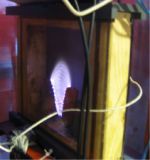
A new study focused on electric discharge behaviour under intense gravitational forces shows that its dynamic changes as gravity increases
Arc discharges are common in everyday conditions like welding or in lightning storms. But in altered gravity, not as much is known about the behaviour of electric discharges. For the first time, Jiří Šperka from Masaryk University, Czech Republic, and his Dutch colleagues studied the behaviour of a special type of arc discharge, so-called glide arc, in varying hypergravity conditions, up to 18 G. In a paper just published in EPJ D, they demonstrate how the plasma channel of this glide arc discharge moves due to external forces of buoyancy in varying gravity conditions. These results could have implications for improved safety precautions in manned space flights, and in the design of ion thrusters used for spacecraft propulsion.




